There was a guy who would occasionally drop into my reading group. He was smart but seemingly unfamiliar with the Western canon. We’d read a Shakespeare play and he’d be like “Oh, actually this was quite good—that Shakespeare fellow, I think he was on to something!” It was refreshing and in a way I was jealous, to be able to read Hamlet without starting a line like “To be or not to be” and just sort of autocompleting “that is the question” without really thinking about it.
Whenever I see a famous work of art or architecture, I’ve learned two techniques to help me to experience it fresh:
- Study it in advance.
- Forget everything I learned and concentrate on formal characteristics when I see it in person.
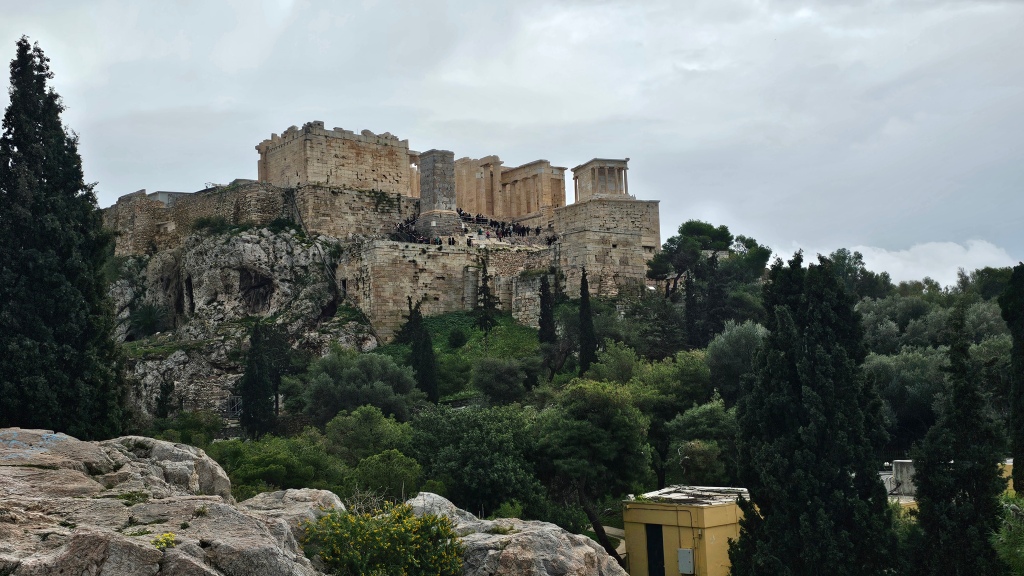
So with that in mind, here is some contextual information that helped me in my visits (I went twice on my trip) to the Acropolis:
In 480 BC, when the Persians invaded Athens, they sacked and burned downed the temples and statues of the Parthenon. The Athenian statesman Pericles was like nope, not gonna have a sad, empty space up there, so he hired the architect Pheidias to design and rebuild the complex. It all went up super quick (450-400 BC) so there’s a cohesive design.
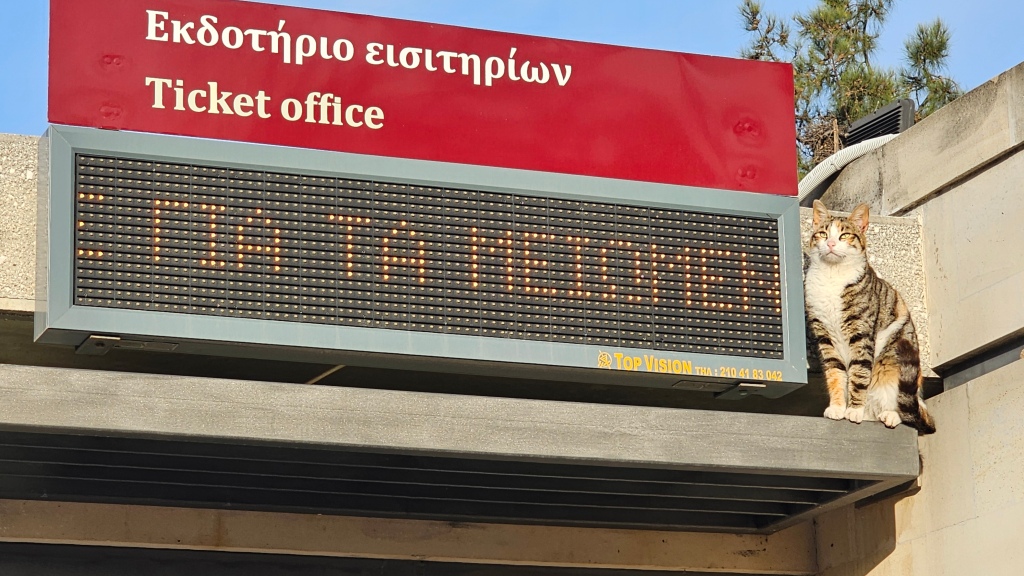
(You see several structures, including a theatre, and the remains of temples and shrines as you walk up and around the slopes of the hill but I’m mostly going to focus on the Parthenon.)
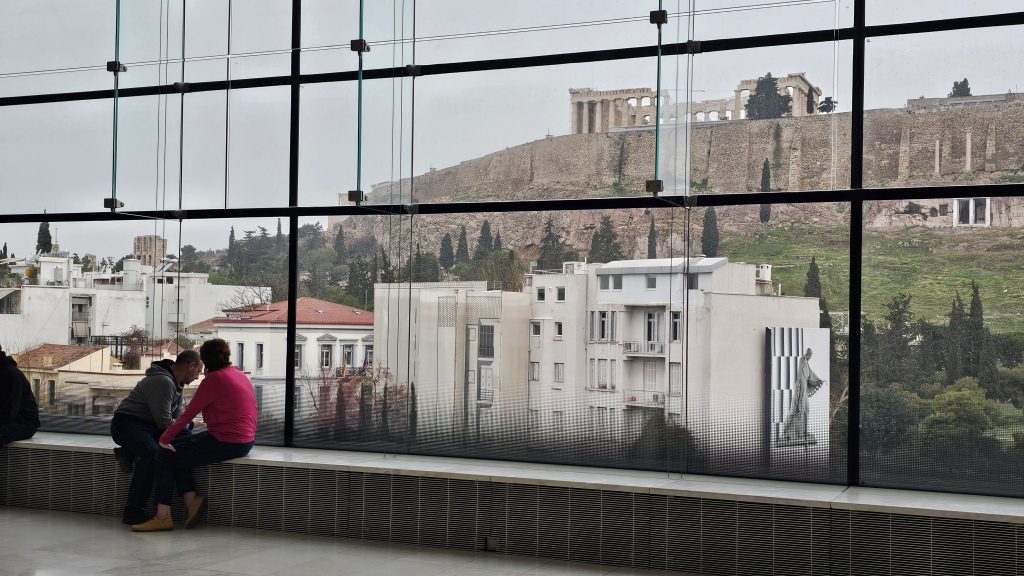
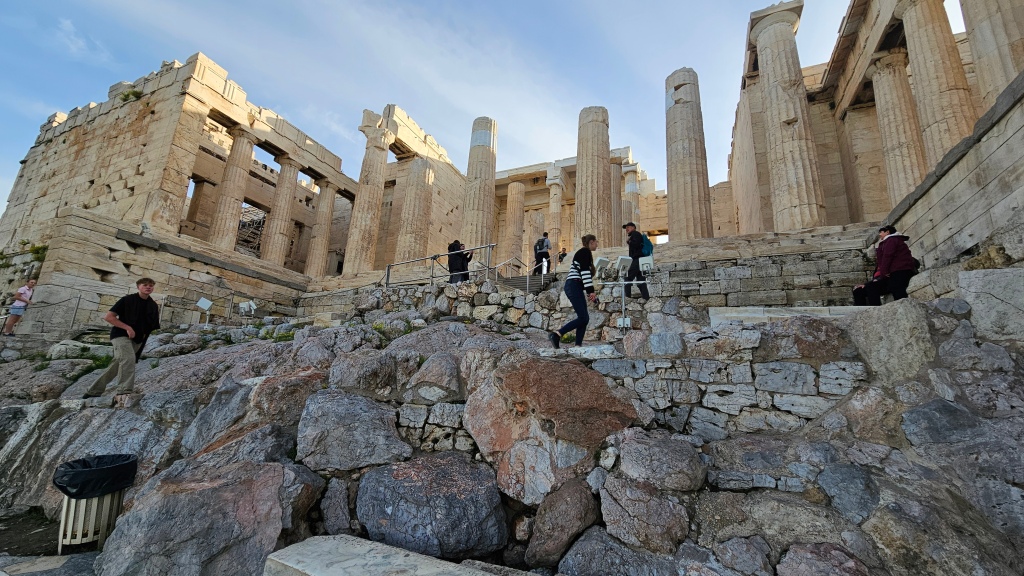
The entrance to the Acropolis is called the Propylaea. Basically it was a spectacular gate with a sort of gallery (the boxy area on the left) that was filled with statues.
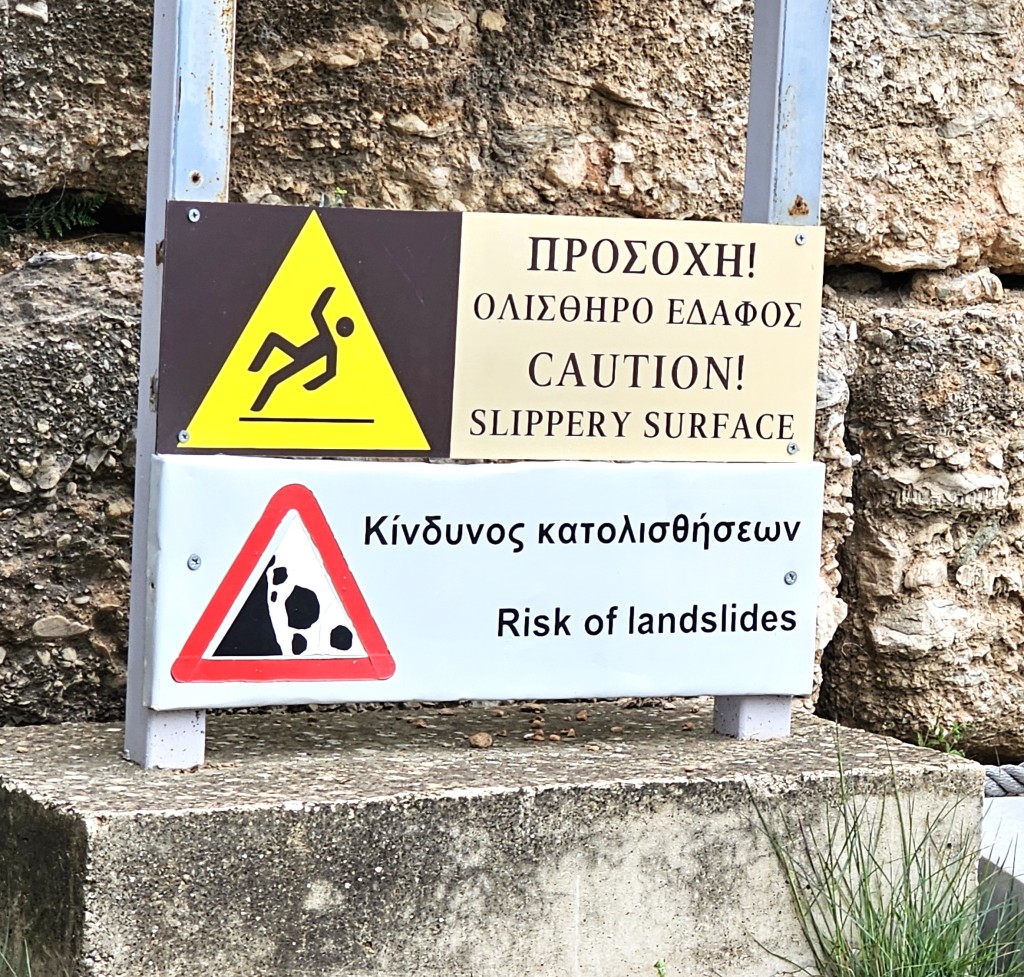
On one of my visits it rained and can attest that all the signs warning of slippery surfaces around the Propylaea were not lying.

After passing through the Propylaea, the Erechtheion Temple is up to your left. I loved this temple but if you were a visitor in ancient times your attention would have been focused on a ginormous bronze statue of Athena in between the Parthenon and the temple.
Athens is named after the goddess Athena, and this whole shindig is for her. In addition to the ginormous bronze statue of Athena outdoors, there were two more; one wooden statue inside the Erechtheion Temple and another ivory and gold one inside the Parthenon.
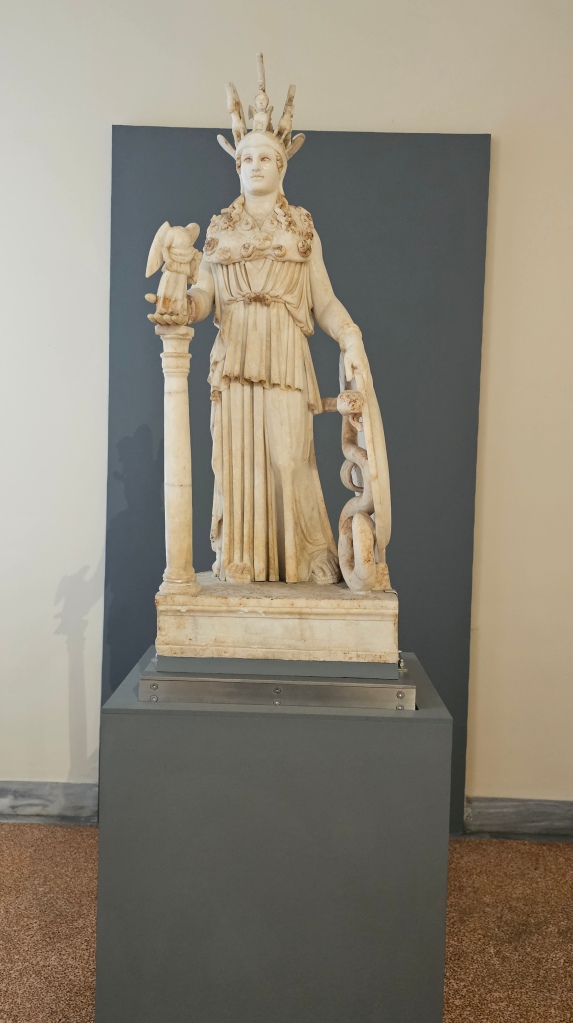
The Athena statues no longer exist, but there are small copies around, like this one I saw in Athen’s National Archeological Museum. I mean, I feel kind of bad for Athena—being a goddess in the time of beautiful Classical statuary and still having such a tacky sculpture made of her.
So anyway, a 40 foot tall sculpture of Athena was installed inside the Parthenon. Every four years, the women of Athens would weave a new cloak for her and then they would bring it up in a procession called the Panathenaean, up up up through the Propylaea, into the Acropolis and there you have it; same tacky statue, brand new cloak.
(I imagine the ladies of Athens jockeying for the most high status roles in the Panathenaean such as who got the most prominent cloak-carrying and statue-dressing positions, like table seating at these tedious galas we are always throwing to raise money at non profits).
Across from the Acropolis hill, in the Acropolis Museum, there’s an excellent reconstruction of the frieze that used to decorate the Acropolis. The frieze illustrated the Panathenaean in dramatic detail. The museum doesn’t have the original friezes and other Acropolis sculptures because they were chopped off and brought to England by a British dude who thought that was an a-okay thing to do and now they’re in the British Museum in London because they also think that’s an a-okay thing to do. Guess what the people of Greece think about their cultural heritage being held hostage in London? Hint: not a-okay.
Okay, that’s enough background information. Now it’s time to talk about the formal characteristics of…
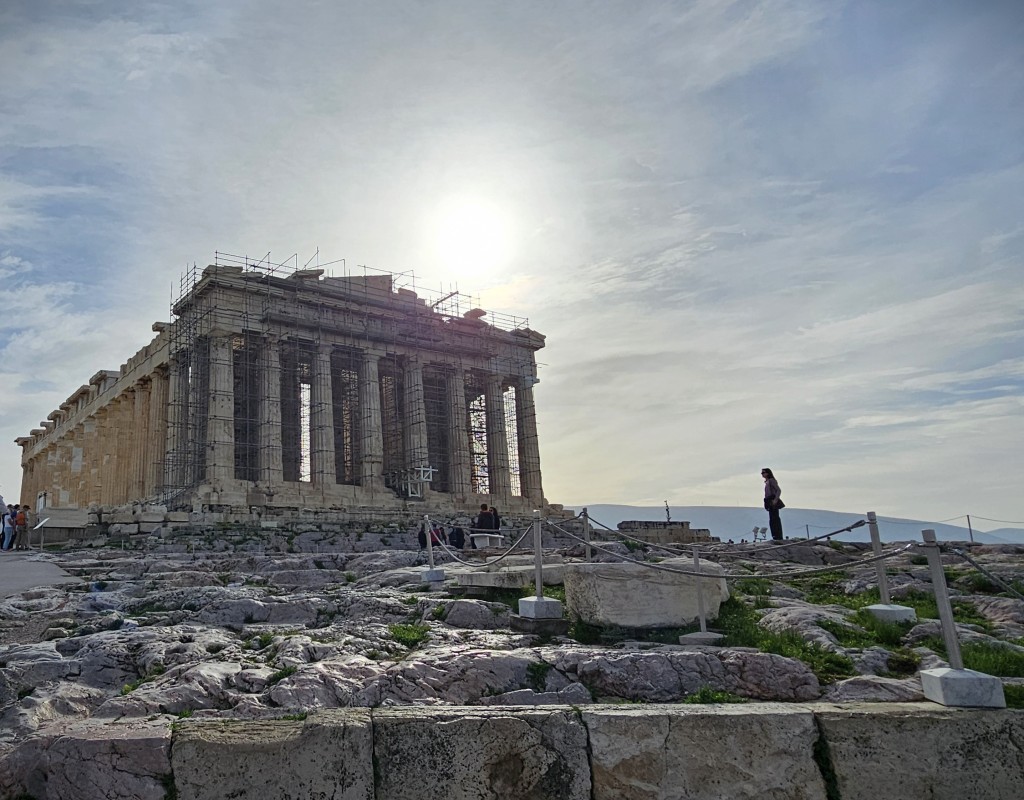
…the Parthenon.
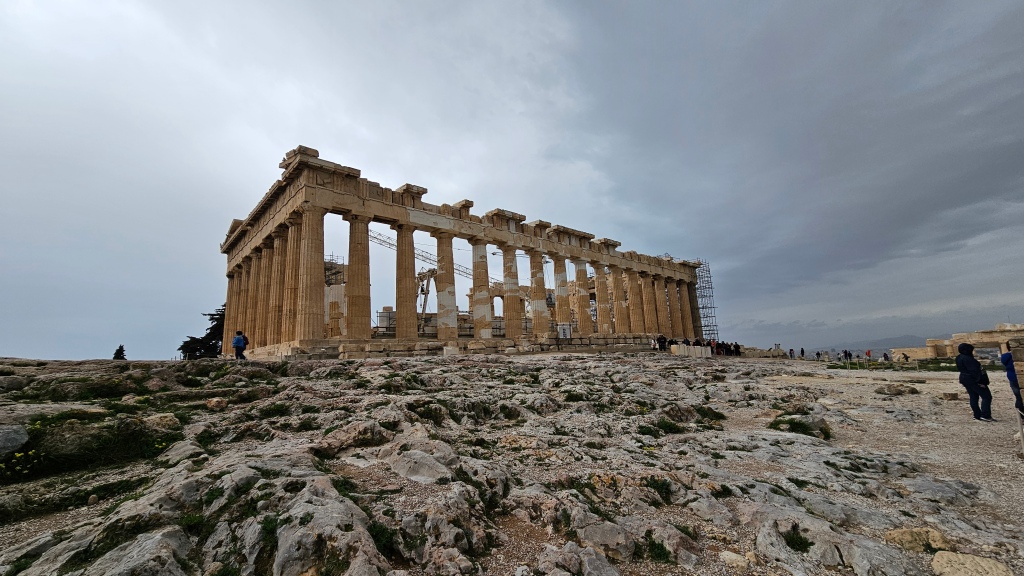
It originally had a roof and it was brightly painted and of course there were internal and external sculptures and friezes so you’ll need to imagine it like that. Otherwise, the view of the Parthenon now is not all that different from 438 BC.
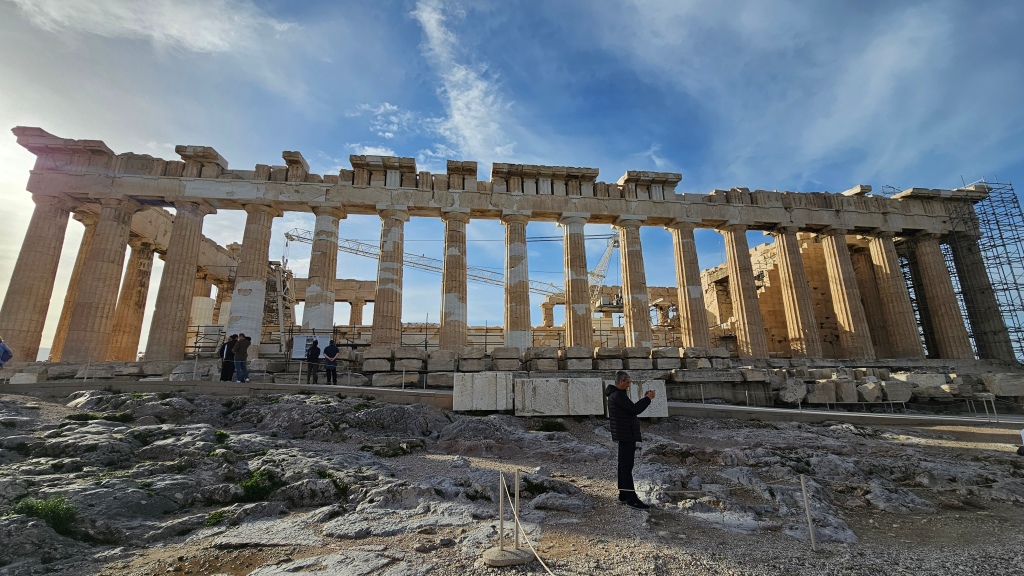
Guys, this famous building is one big optical illusion. When seen from the side, what looks like a straight line of stairs is actually a slope that rises higher up in the center, gradually moving down on the edges.
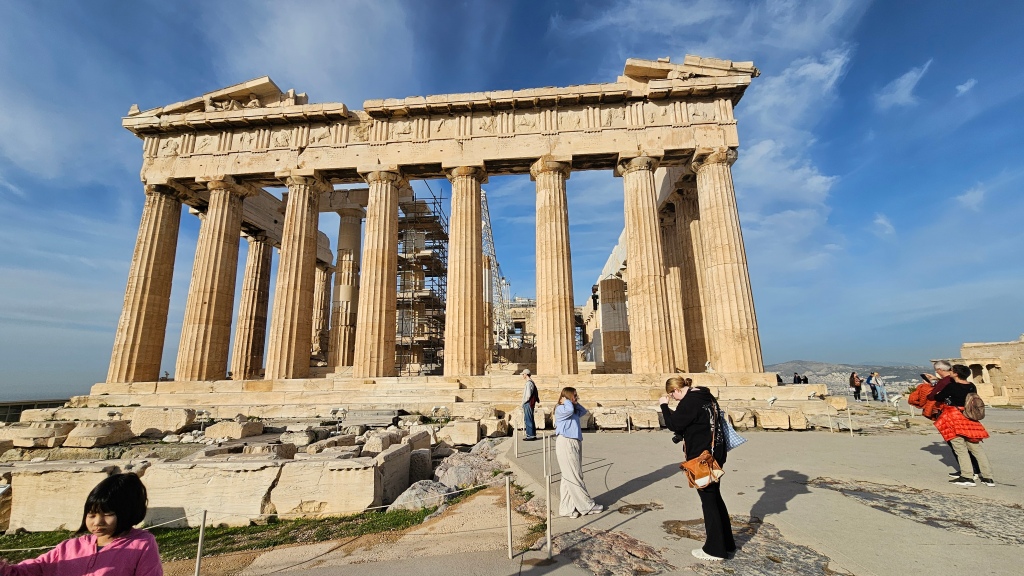
The Doric columns tilt inward and bulge out a bit in the center. The columns on the corners are fatter than the rest.
All these architectural bends and bulges are used to manipulate perspective to create a perfectly symmetrical-appearing temple.
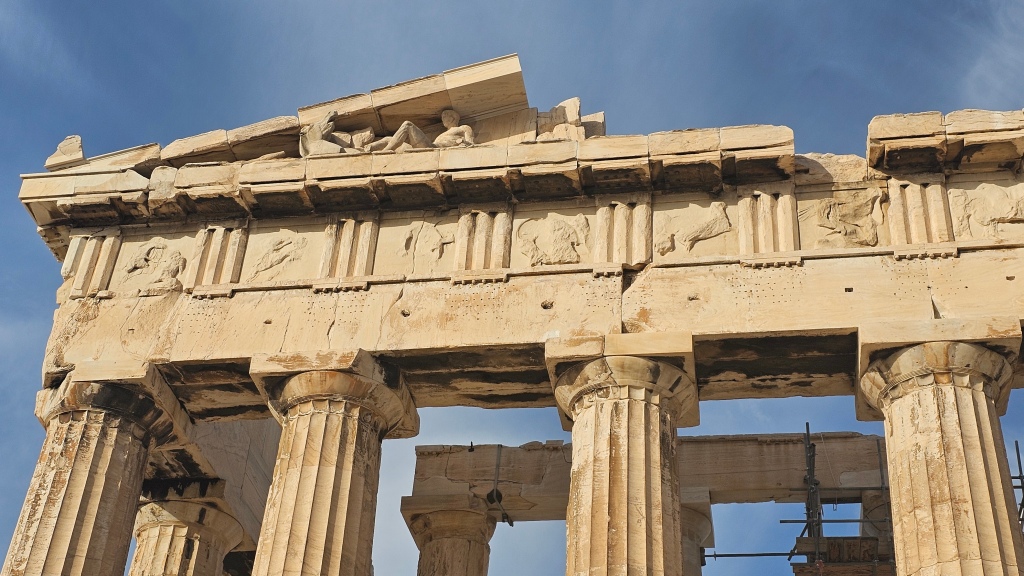
I haven’t missed any opportunities to express my distaste for neo-classical architecture. But the actual real deal, especially the cleanly spiritual Doric style, is my absolute jam. The way those surprisingly warm-toned fluted columns join up with the simple capitals and that elegant pediment—-gahhhhhhhhh!!!!!!!!!!
The three vertical stripey lines under the pediment are called triglyphs and the spaces in between them, where the sculptures that the British dude kidnapped used to be, are called metopes.
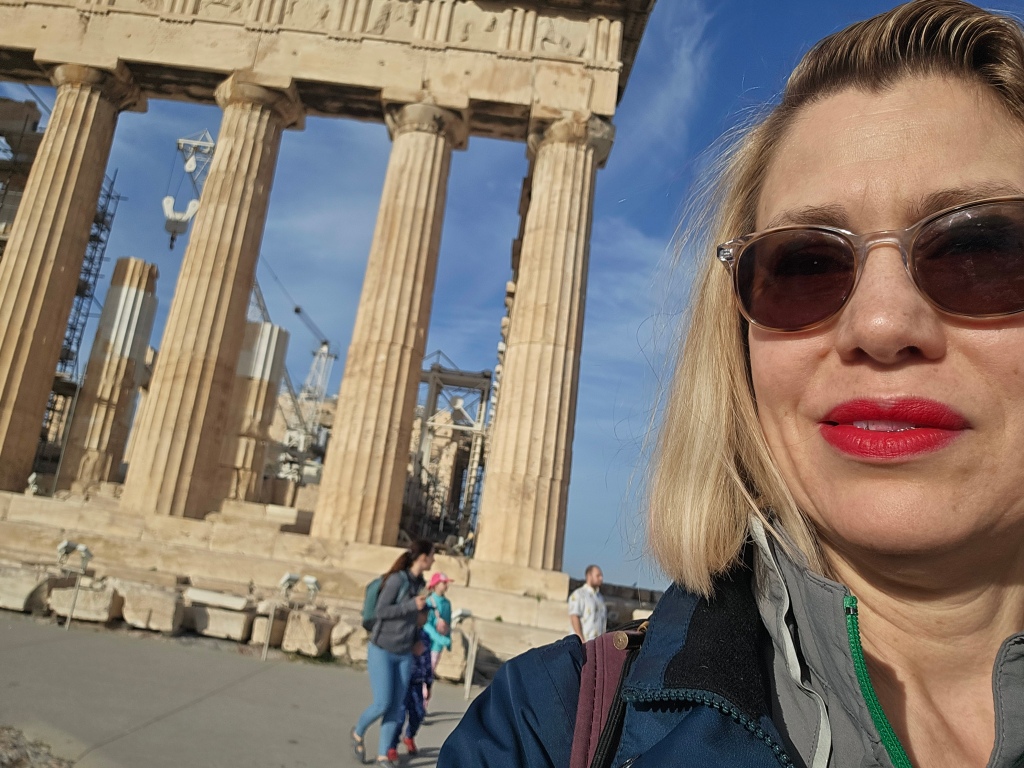
If I’d been an Athenian woman 2500 years ago, I wouldn’t have been important enough to be in charge of carrying Athena’s cloak up the hill. I’d probably have been at the festival though, looking around for snacks and a bathroom. When everyone had gone inside to dress the statue, I’d be outside, circling the Parthenon, marveling at the geniuses who created the illusion of perfection by tweaking architectural perspective.
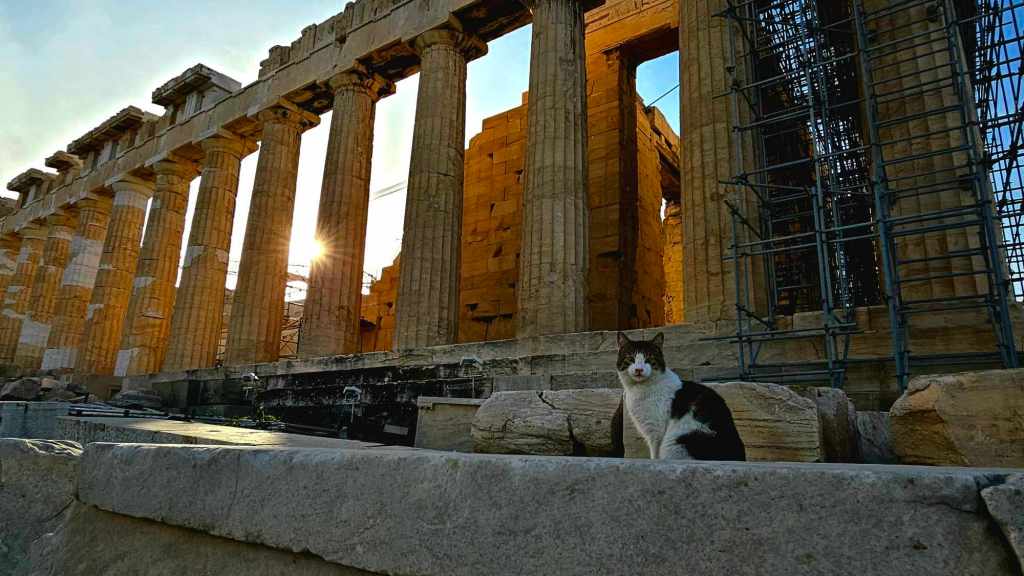
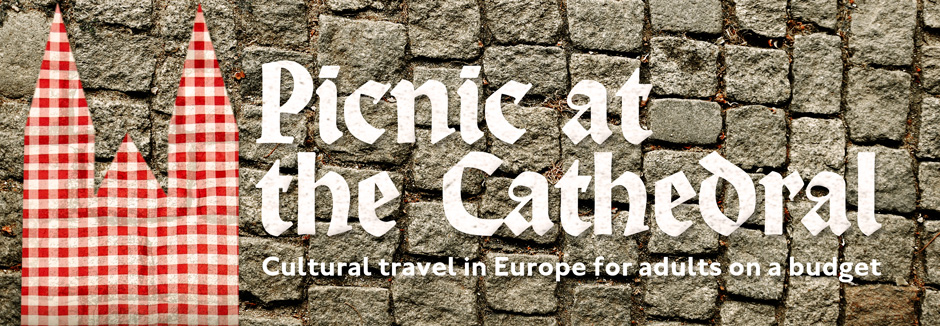

Is there a classical Greek word for perspective? There must be, but I can’t find it
LikeLiked by 1 person
I couldn’t find either it so I used google translate:
Μου αρέσει να χαϊδεύω τις γάτες κάτω από τις λυγισμένες προοπτικές κολώνες.
LikeLiked by 1 person
I guess modern Greek is all one has! So we’ll have to take a longer route to figuring out whether the Greeks knew about perspective in the abstract, or whether they just knew what they wanted something to look like, and then have to get to it by trial and error
LikeLiked by 1 person
Fantastic! And so glad to see you adventuring! I’m amazed at how few people were there when you were. I went last year in August and man, was it crazy! This cyber-visit with you as guide is great. And I’m sure you had some wonderful meals. I hope all is well.
LikeLiked by 1 person
I was pretty lucky when I went to Athens, because it was the beginning of March and while I saw tourists, I didn’t experience any crowding and was able to spend plenty of time at the Acropolis. I had purchased a multi-site pass to avoid any ticket lines and made a second visit when the Acropolis was free on the first Sunday of the month. Both times it was first thing in the morning.
I did have some wonderful meals, especially enjoyed the lavish hotel breakfasts. (And unlike me, you should probably hold off on guzzling the hotel breakfast orange juice and coffee because if there were bathrooms up there I couldn’t find them.)
I hope you had fun there last August, despite the crazy crowds!
LikeLiked by 1 person